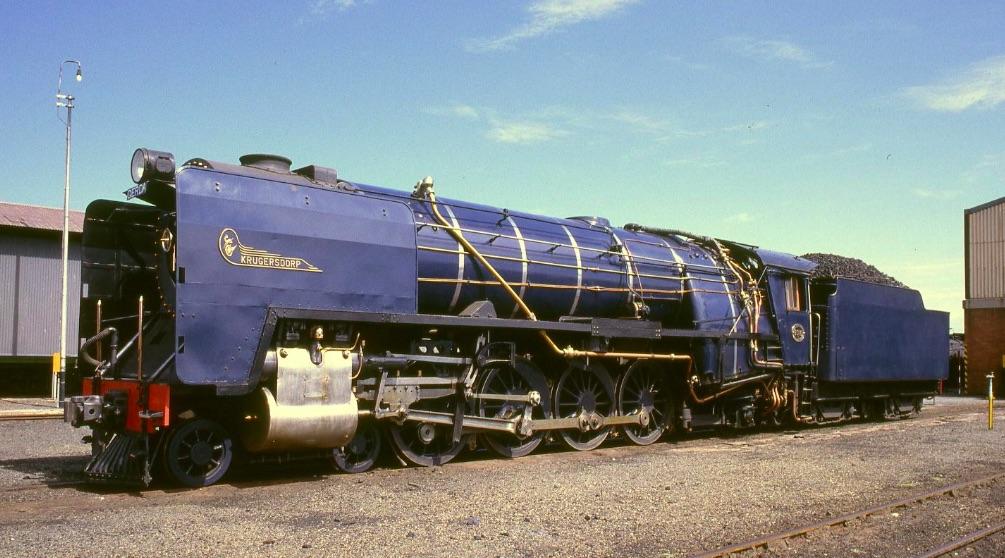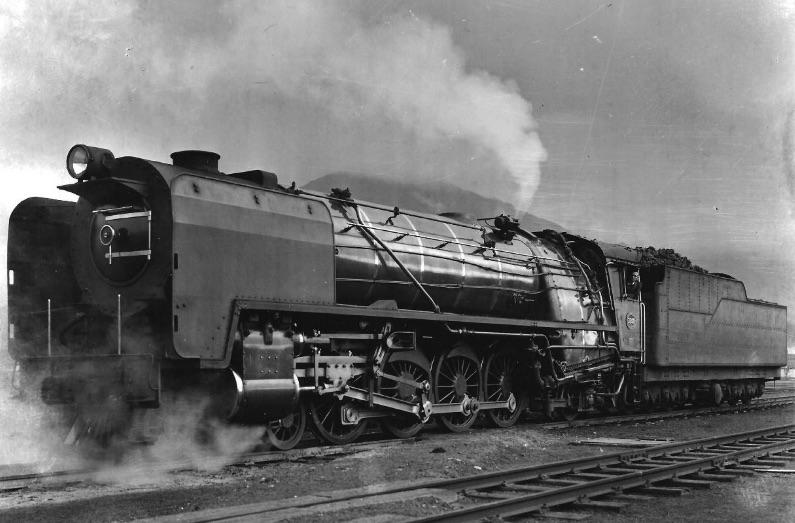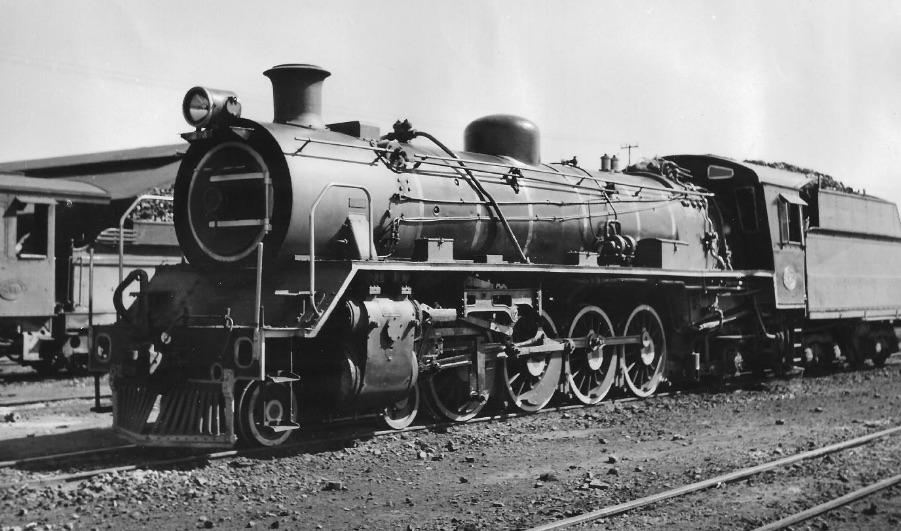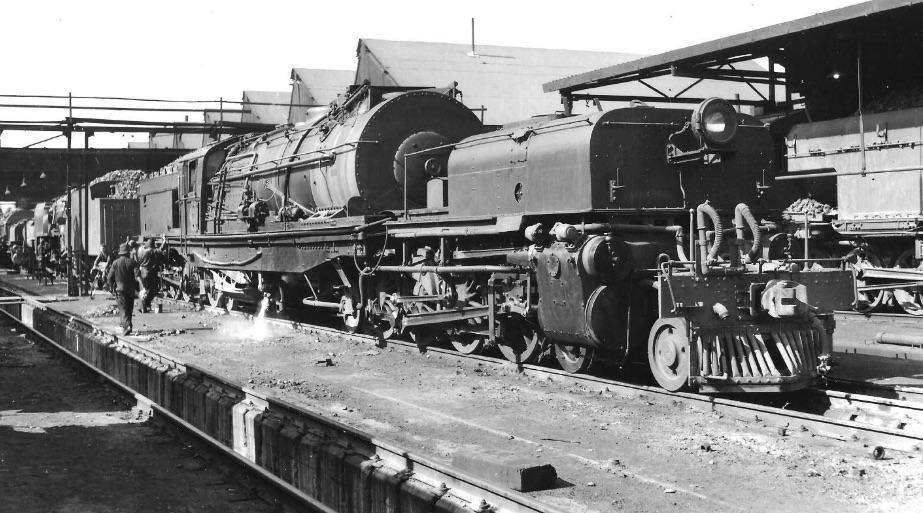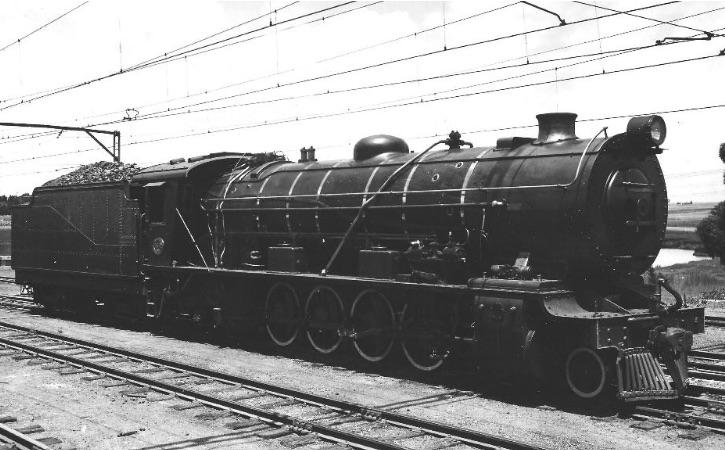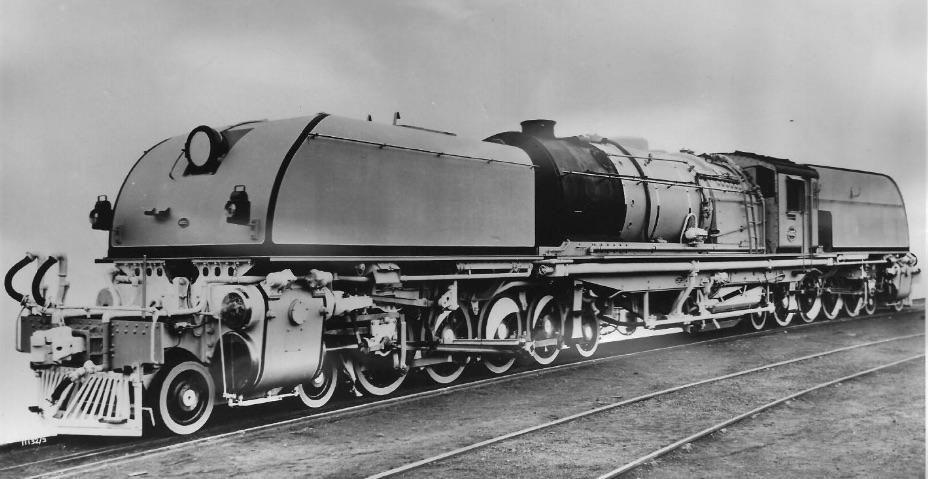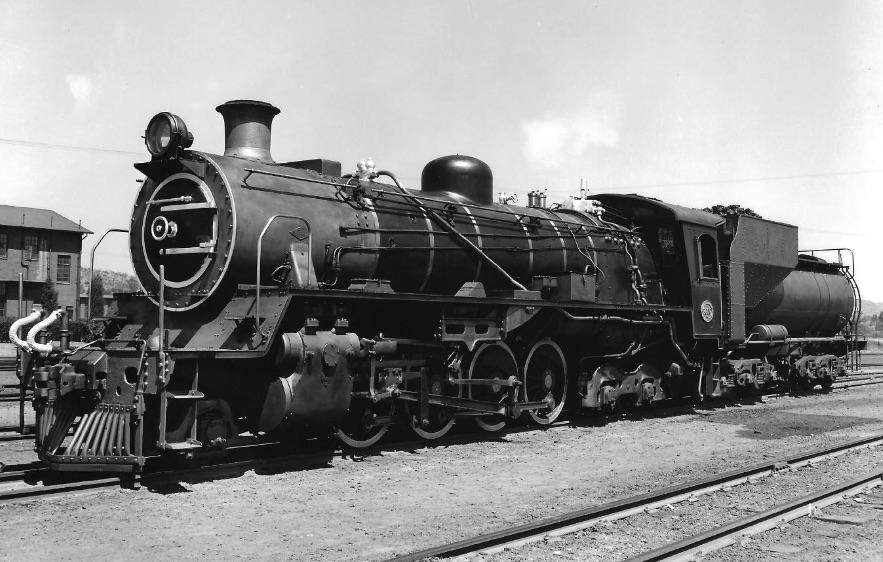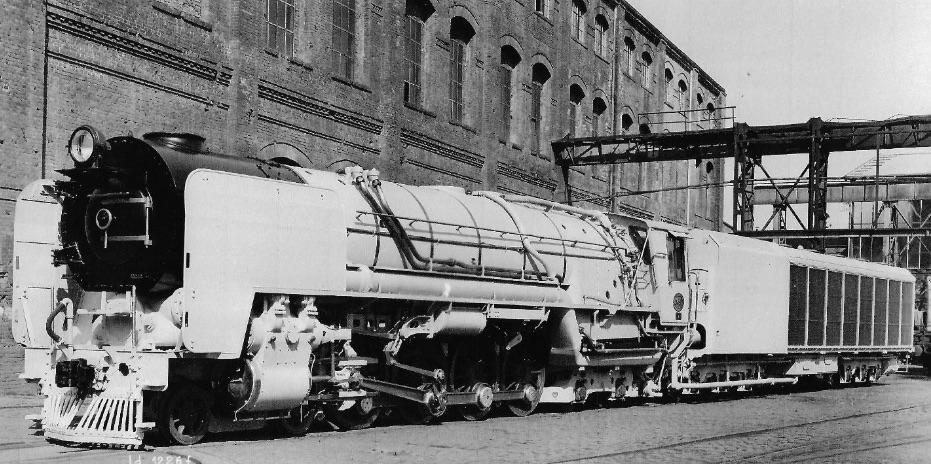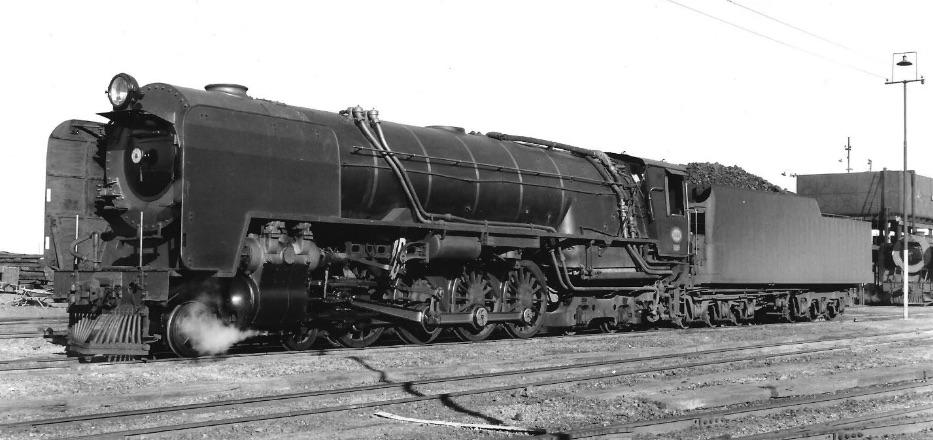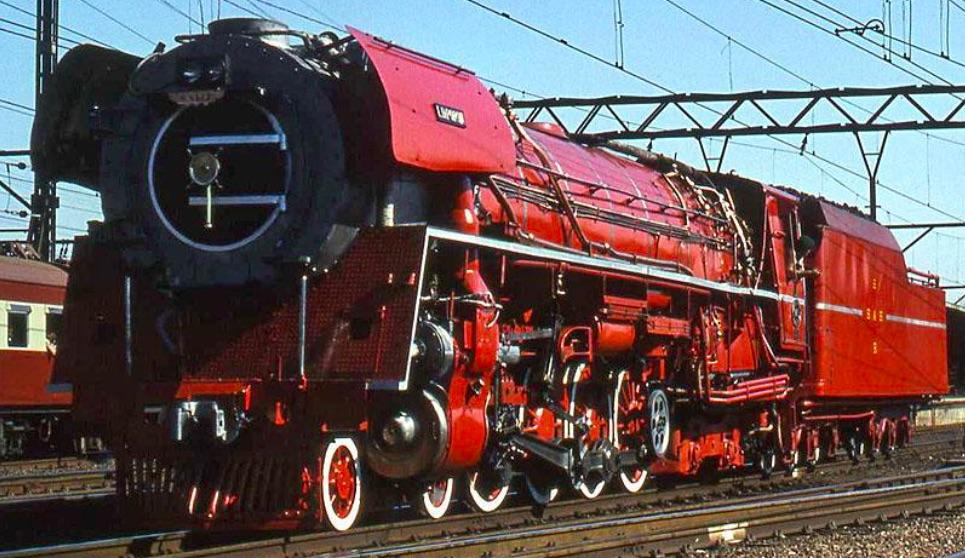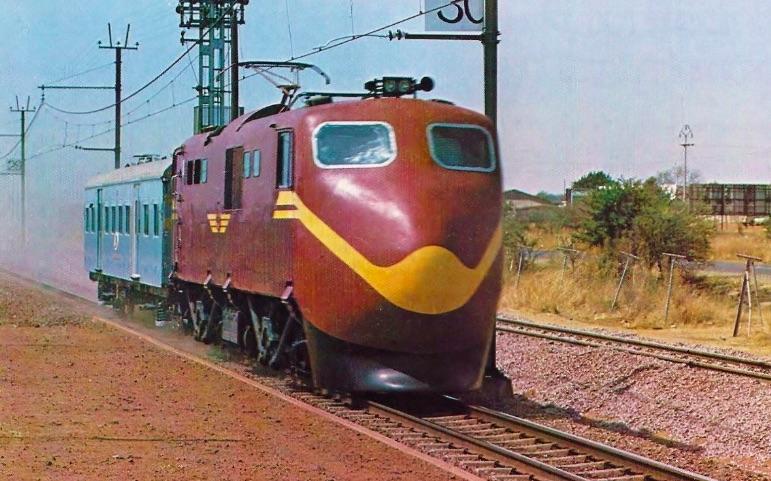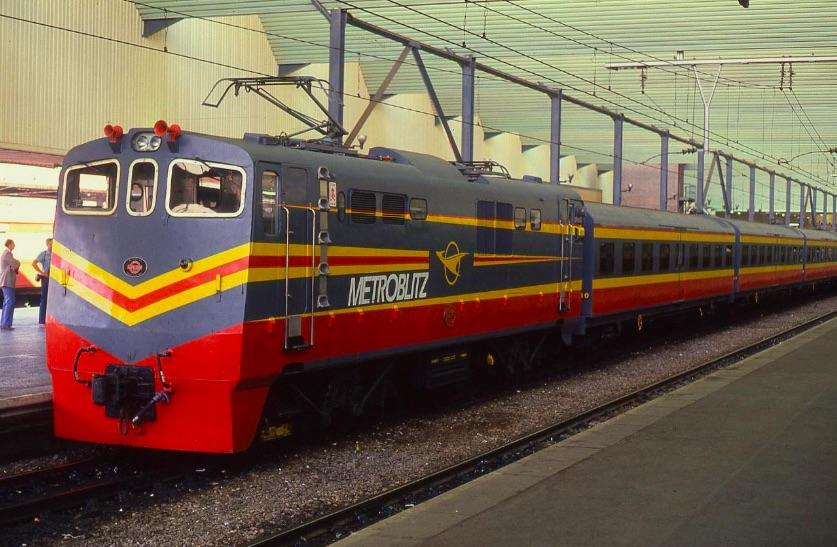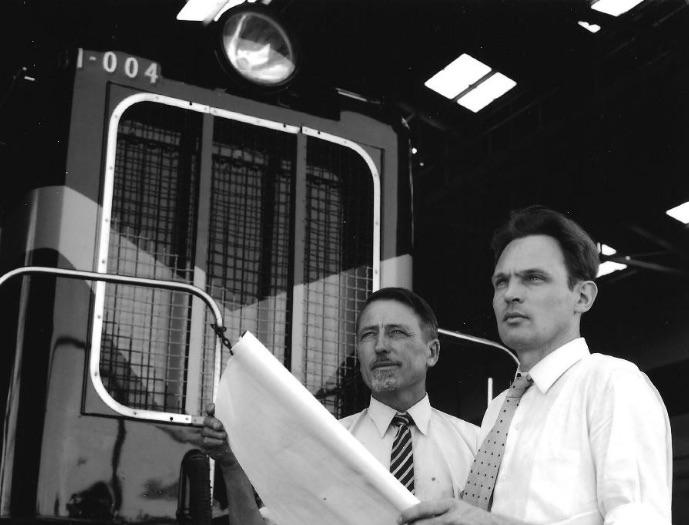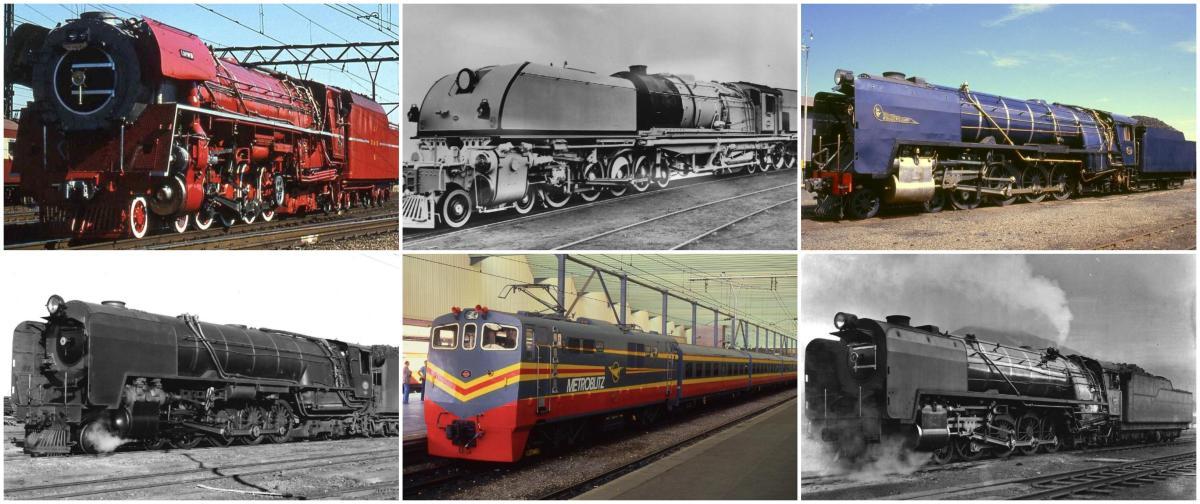
Disclaimer: Any views expressed by individuals and organisations are their own and do not in any way represent the views of The Heritage Portal. If you find any mistakes or historical inaccuracies, please contact the editor.
Below is the second part of the series by Les Pivnic on the 'Great Mechanical Engineers of the South African Railways & Harbours. Click here to read Part 1.
Mr. W. A. J. Day succeeded Mr. Watson as CME and he was fortunate in that he could simply develop his predecessor’s designs – making some adjustments to produce the next flock of steam designs. The class 15F is one of Mr. Day’s very successful designs, based on the Watson class 15E. In fact, at 255 engines of this class built, it was the most numerous class of engine on the SAR and it became well-known, world-wide. The class 15F worked on almost all the main lines of the SAR.
15F No.3016 was painted in blue livery in honour of her work over several years hauling the famous Blue Train between Johannesburg and Klerksdorp
Mr. Day also took the basic Watson 15E design and making a few changes – notably bigger coupled driving wheels, he produced the class 23 of which 134 entered service just before World War 2. He also took Mr. Watson’s type ‘EW’ tender on six-wheel bogies – designed by Mr. Watson for his proposed class 22 2-10-4 freight engine and coupled this large tender to his class 23 design.
The class 23, pictured below, was the mainstay of engine power on the Cape Main Line from 1939 – 1953 and then did extensive work in the OFS between Bloemfontein and Noupoort as well as other OFS Main Lines.
The Class 23
Mr. Day improved on Mr. Watson’s class 19C and produced the famous class 19D for extensive branch line work. Eventually, 235 engines of this class were in service. The last order placed with the North British Locomotive Co., under Mr. Day’s successor, Dr. M. M. Loubser, for 50 engines of this class included the provision of ‘torpedo-type’ tenders but, the 19D engines ordered under Mr. Day’s term as CME had conventional tenders as shown below.
19D engines with conventional tenders
Mr. Day introduced one of the most successful Garratt-type locomotives for service on the Johannesburg – Zeerust line to Mafeking. These 16 locomotives proved to be highly successful in that the basic type was perpetuated by Mr. Day’s successors in the following years with over 100 (similar but improved in detail) engines being placed in service in the 1950s.
Garratt-type locomotives for service on the Johannesburg – Zeerust line to Mafeking
In 1939, Mr. Day was succeeded by Dr. M. M. Loubser as CME and he immediately set to work designing the next lot of steam locos for the SAR. He designed a special boiler to fit the very successful Hendrie-designed class 12A. The reboilered class 12AR continued the success of its predeccessor, working in the Eastern Cape, and Transvaal – later elsewhere on the SAR.
Reboilered class 12AR
Dr. Loubser then introduced the class GEA Garratt locomotives shortly after the end of World War 2. These engines again proved to be totally successful, working mainly in the Cape Midlands and Natal.
Class GEA Garratt Locomotive
Dr. Loubser also introduced the final form of the class 19D referred to earlier and another very successful type of engine for extensive use in the previous South West Africa as well as light-rail branch lines in the RSA – the class 24 - 100 engines of this class placed in service in 1948/9.
Class 24 Engine
Below is a photo of the class 25 condensing locomotive of which 90 engines were placed in service in 1953-1955 in the arid Karoo to provide steam motive power on the Cape Main Line between Touws River, Beaufort West and De Aar where the water supply was very limited.
Class 25 condensing locomotive
In theory, these engines could travel for extended periods re-using the water supply in the condensing tender. Their usage was later extended elsewhere until a decision was taken to remove the condensing equipment from all but three of the condensing units, providing 87 converted class 25NC locomotives for general main line service.
One of the original non-condensing class 25NC engines
50 class 25NC (non-condensing) locomotives were placed in service in 1953 between De Aar and Welverdiend initially. As electrification spread, they were mainly used between Kimberley and De Aar but also ventured onto other sections of main line.
The class 26 represented the final development of steam power on the SAR. Below is a photo of the ‘Red Devil’ in her original guise – she was later modified with larger ‘elephant ear’ smoke deflectors and several of her original special fittings were removed.
'Red Devil'
Turning to the modern era of SAR engineering, we come to a world speed record for the 3ft 6in gauge. In the photo below, we see the special test train travelling at the record speed of 245km/hour on test!
Breaking the world speed record for 3ft 6in gauge
Here is the ‘Metroblitz’ train set that provided the very first daily fast train service between Pretoria and Johannesburg, running on the existing standard main line via Germiston in just 43 minutes! It didn’t enjoy the luxury of a dedicated direct line to Pretoria from Johannesburg. The ‘dog’s leg’ via Germiston made this performance even more noteworthy on the 3ft 6in gauge!’
Metroblitz
Dr. Herbert Scheffel was responsible for the hi-speed tests that created a world speed record for the Cape gauge and the introduction of the first high speed train service between Pretoria and Johannesburg in 1984.
Dr Herbert Scheffel on the right
About the author: Les was born in a private house in Brixton on July 7, 1935. He attended Twist Street Primary School from 1946 to 1948, after returning from Durban where he spent 3 years during World War II attending Addington Primary School when his dad was in the Army. He attended Parktown High and after that, he started his working life for the CNA in their Fancy Goods Department. Les then trained as a window dresser with Jacoby & Co in Kerk Street where he remained for 15 years of his working life. All this time, his heart was in railways and he had made a private study of the SAR's steam locomotives and other rolling stock - especially dining cars. This led to an invitation from the SA Railway Administration to join the SA Railway Museum as Assistant Curator in July 1972. He was overjoyed at this development and remained in their employment for the remaining part of his working life. During this time, SA Transport Services published his book on the history of all catering vehicles used on the SAR - dining/kitchen/lounge cars etc. He was boarded on pension in 1989.
Comments will load below. If for any reason none appear click here for some troubleshooting tips. If you would like to post a comment and need instructions click here.

